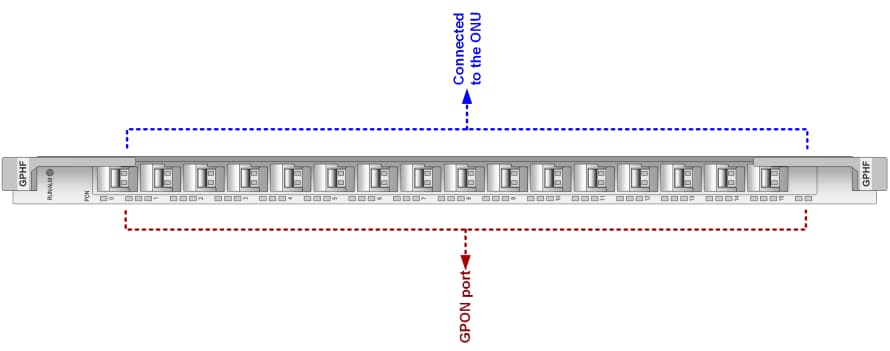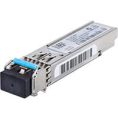GPHF GPUF GPSF and GPLF, 16-port GPON interface board, applied to Huawei MA5800 OLT. All of these boards are almost same appearance, but they are in some different features and functions.

The following table lists all the parameters, “Yes” stands for support, “No stand for “not support”.
| Specification | GPHF | GPUF | GPLF | GPSF |
| Application scenario | FTTC/B/D, D-CCAP, FTTH, FTTO/FTTM |
FTTC/B/D, FTTH, FTTO/FTTM | FTTC/B/D, FTTH, FTTO/FTTM | FTTH |
| Port Qty | 16 | 16 | 16 | 16 |
| Forwarding capability | 40 Gbit/s | 40 Gbit/s | 40 Gbit/s | 40 Gbit/s |
| Port rate | upstream: 1.244 Gbit/s downstream: 2.488 Gbit/s |
|||
| Max split ratio | 1:128 | 1:128 | 1:128 | 1:128 |
| Controlled optical signal transmission of the optical module | Yes | Yes | Yes | Yes |
| ONU-based shaping | Yes | Yes | Yes | Yes |
| Temperature query and high temperature alarm | Yes | Yes | Yes | Yes |
| Automatic power shutdown in case of a high temperature | Yes | Yes | Yes | Yes |
| Energy saYesing for serYesice boards | Yes | Yes | No | Yes |
| Max distancedifference between two ONUs under the same PON port | 40km | 40km | 40km | 40km |
| Max number of MAC addresses | 131072 | 32768 | 32768 | 16384 |
| Board supporting downstream FEC | Yes | Yes | Yes | Yes |
| Board supporting upstream FEC | Yes | Yes | Yes | Yes |
| Rogue ONT detection and isolation | Yes | Yes | Yes | Yes |
| Assured bandwidth configurable on a port | 1238784 kbit/s | 1238784 kbit/s | 1238784 kbit/s | 1238784 kbit/s |
| Number of T-CONT supported by each GPON port | 1024 | 1024 | 1024 | 1024 |
| Number of ONUs supported by a GPON port | 128 | 128 | 128 | 128 |
| Number of GEM ports supported by each board | 16384 | 16384 | 16384 | 16384 |
| Number of GEM ports supported by each GPON port | 3872 | 3872 | 3872 | 3872 |
| MAX Number of Service Flows Supported by the Board | 16368 | 16368 | 16368 | 16368 |
| 9K Jumbo frames | Yes | No | Yes | No |
| Routes/ARP | 196608 | 196608 | 196608 | 65536 |
| 1588Yes2 | Yes | Yes | Yes | No |
| NTP | Yes | Yes | Yes | Yes |
| HQoS | Yes | No | No | No |
| Security (Anti-DOS, Anti-MAC/IP Spoofing) | Yes | Yes | Yes | Yes |
| Y.1731 PM | Yes | Yes | Yes | No |
| PON ISSU | Yes | No | No | Yes |
| D-CCAP | Yes | No | No | No |
| GPON Type B Protection Principles (Single Homing) | Yes | Yes | Yes | Yes |
| GPON Type B Protection Principles (Dual Homing) | Yes | No | No | No |
| GPON Type C Protection Principles (Single Homing) | Yes | Yes | Yes | Yes |
| GPON Type C Protection Principles (Dual Homing) | Yes | No | No | Yes |
| Power budget supported by a GPON port | Class B+ (28.5 dB, mostly used), Class C+ (32 dB, longreach transmission) Class C++: 35 dB |
|||
| Minimum bandwidth supported by a T-CONT | 1 Mbit/s (in the minimum delay mode) 128 kbit/s (in the maNoimum bandwidth usage mode) |
|||
In summary:
1, GPHF is better performance than the other 3 boards, and have more functions and application scenario supported;
2, Only GPFD supports HQoS, PON ISSU and D-CCAP;
3, GPUF and GPSF do not support 9K Jumbo frames.





















